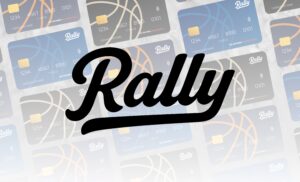5 Athlete-Led NIL Campaigns That Are Changing the Game
The introduction of Name, Image, and Likeness (NIL) rights has transformed college athletics—giving student-athletes new tools to build personal brands, earn income, and shape their own narratives. But beyond the headline-grabbing endorsement deals, some athletes are leading bold, creative campaigns that blend entrepreneurship, community engagement, and purpose-driven storytelling. These initiatives go far beyond signing autographs or traditional sponsorships – they’re redefining what it means to leverage NIL for impact.
Here are five standout athlete-led NIL activations, each showcasing innovation in a different way and illustrating how athletes and fans are connecting in this new era:
1. Personalized Merchandise: Building a Wearable Brand
Custom merchandise has become one of the most visible expressions of athlete identity. From limited-edition apparel drops to player-designed logos, college athletes are launching merch lines that let fans literally wear their support. This isn’t just about selling t-shirts – it’s about building a personal brand that fans can identify with and rally around.
Example: The University of North Carolina’s women’s basketball players collaborated with sports apparel startup BreakingT to launch a line of team-specific merchandise. Fans could buy unique designs tied to individual players, turning standout on-court moments into memorable t-shirt graphics. The players didn’t stop at just selling gear – they hosted Instagram Live sessions and giveaway contests to engage the community and deepen fan interaction. This mix of online engagement and real-world merchandise turned apparel into a platform for connection. (Notably, UNC basketball has been a national leader in NIL merchandise sales.)
Why it matters: Personalized merch allows athletes in any sport or division to extend their reach. Fans get to feel closer to their favorite players, and athletes create a new income stream while showcasing their creativity. It’s a win-win that underscores how everyday fans can directly support specific athletes through something as simple as buying a shirt.
2. Social Media Sponsorships: Authenticity Over Ads
With built-in audiences on TikTok, Instagram, and YouTube, college athletes are proving to be effective brand ambassadors – especially when campaigns reflect their genuine routines and values. Rather than polished ad spots, the most successful social media sponsorships feel organic and authentic.
Example: Oregon football standout Kayvon Thibodeaux partnered with a local sports beverage brand and integrated it into his workout content. Instead of a generic promo post, he showed how the product fit into his training regimen – sharing videos of himself using the drink during summer workouts and two-a-days. The campaign emphasized performance over promotion, making it resonate with fans as a believable part of his athletic journey rather than a forced ad. (Thibodeaux was one of the early stars to jump into NIL, signing multiple deals ranging from NFTs to major brands.) His approach demonstrated that when athletes stick to authenticity, their sponsored content can be both engaging and lucrative.
Why it matters: Social media NIL deals reward athletes for being themselves. A sincere behind-the-scenes vlog or unfiltered Instagram post can build trust with followers. Brands benefit from higher engagement, athletes earn income, and fans enjoy a closer look at the real daily life of players. It’s a reminder that influencer culture in college sports works best when it’s genuine.
3. Local Business Collaborations: Hometown Heroes
College athletes aren’t just partnering with national brands – many are linking up with local businesses to become hometown heroes. These collaborations drive foot traffic for small businesses, tell community stories, and make marketing deeply personal.
Example: In one college town, several players teamed up with popular local food trucks to create special game-day menus and fan meet-and-greet events. On football Saturdays, fans could find their favorite athletes serving signature dishes or handing out coupons at these food trucks. The partnership was promoted on social media, creating online buzz that translated into long lines at the trucks on game day. This hyper-local approach helped small businesses capitalize on college spirit, while athletes gained hometown fan support beyond the stadium. (Similar NIL partnerships have been seen elsewhere – for instance, a local barbecue restaurant in Arkansas sponsored the entire Razorbacks offensive line.)
Why it matters: When athletes collaborate with local enterprises – whether it’s a restaurant, a car dealership, or a neighborhood gym – both sides benefit. Athletes earn compensation (often in cash, free meals, or services) and strengthen ties with the community. The community, in turn, feels pride in “their” athletes supporting local commerce. It showcases fan-powered support at the grassroots level, aligning with the idea that NIL isn’t just for big markets.
4. Charity Events & Cause Campaigns: Leading with Purpose
NIL isn’t just a business opportunity – it’s also a platform for giving back. More athletes are using their influence and new NIL freedoms to raise money for charity, promote important causes, and engage fans in meaningful community impact.
Example: A group of college basketball players organized a charity exhibition game called “Hoops for Hope” to support pediatric cancer research. They used their social media to sell tickets and publicize the event, created behind-the-scenes content of their practice sessions, and even live-streamed portions of the game. The result was a sold-out arena and significant donations raised for the cause. Fans who attended or watched online weren’t just supporting their favorite players; they were contributing to a mission those players cared about. By leveraging NIL rights, the athletes could legally use their names to promote the event and direct funds to charity – something not possible before NIL rules changed.
Why it matters: Purpose-driven NIL campaigns demonstrate the positive power of college athlete influence. Athletes can rally fans around something bigger than sports, whether it’s charity, social justice, or community service projects. In doing so, they expand their personal brand as leaders and role models, which can have long-term benefits well beyond college. (For example, Oklahoma quarterback Nick Evers announced he would donate proceeds from his NIL activities to Make-A-Wish, inspiring other players to follow suit.)
5. Scholarships and Mentorship Programs: Giving Back Through Education
Scholarships and Mentorship Programs: Giving Back Through Education – Some student-athletes are even redirecting their NIL earnings into scholarships and mentorship programs – particularly to uplift kids from underserved communities or to support the next generation of athletes.
Example: Inspired by the philanthropic work of pros like Chris Paul and the community spirit of NCAA stars like Caitlin Clark, a group of Division II athletes pooled part of their NIL income to start a hometown scholarship fund. They partnered with local charities to match their contributions dollar-for-dollar. The fund provides college application assistance, small scholarships, and one-on-one mentorship for high school athletes in their hometowns. Through social media, these college players shared stories of scholarship recipients and encouraged fans to donate as well. The initiative not only multiplies the impact of their own NIL money, but also invites fans to join in supporting education – reinforcing that NIL can benefit everyone, not just the athletes themselves.
Why it matters: This trend highlights a broader view of success. For these athletes, NIL isn’t just about personal gain; it’s about creating a legacy and lifting others up. Such programs also subtly remind fans that supporting athletes (whether by buying their merch or joining their cause) can create ripple effects in the community. Notably, established players have set examples: Chris Paul famously endowed a scholarship fund at Wake Forest for local students, and Caitlin Clark launched a foundation that has made sizable grants to charities in Iowa. College athletes are taking those cues and turning NIL into a tool for positive change.
Closing Thoughts: The Next Chapter of NIL
The most compelling NIL stories aren’t about the biggest paychecks or flashiest endorsements – they’re about innovation, impact, and athlete agency. From designing their own product lines to elevating hometown businesses, organizing charitable events, and investing in future generations, today’s college athletes are reshaping the playbook of influence and fandom. Perhaps most importantly, these campaigns show that every fan can play a part. By engaging with these athlete-led initiatives, even everyday fans are now supporting athletes in new, meaningful ways – a hint of a future where fan-driven support becomes a cornerstone of college sports.
Want to go deeper? Follow platforms like On3 NIL, Opendorse, and Front Office Sports for up-to-date coverage on athlete-led NIL campaigns and the trends shaping the future of college sports. The NIL era is just getting started, and these five campaigns are early indicators of how creativity and community can change the game.
References for Further Reading:
- Tar Heel Times (Jun 2022): UNC Basketball Dominates NIL Merchandise Sales – BreakingT partnered with over 150 college athletes and UNC’s players led the nation in NIL merch sales.
- On3 Sports (Apr 2022): Kayvon Thibodeaux on Building His Brand – Details Thibodeaux’s early NIL ventures (NFTs, deals with Nike, United Airlines, etc.), exemplifying his savvy in authentic partnerships.
- Associated Press via KBTX (May 2025): Universities cutting sports, others adding ahead of NCAA settlement – Lists local NIL collaborations, e.g. an Arkansas BBQ joint sponsoring the Razorbacks offensive line.
- Eccker Sports (Nov 2022): 5 Athletes Giving Back Through NIL – Profiles stories like Oklahoma QB Nick Evers donating NIL proceeds to Make-A-Wish.
- ESPN (Nov 2023): Caitlin Clark’s foundation awards grants – Reports that Iowa’s Caitlin Clark launched a foundation and gave four $22,000 grants to local charities.
- ESPN (Oct 2013): Chris Paul on giving back – Notes that Chris Paul established the Nathaniel Jones Scholarship Fund at Wake Forest to send two students to college each year.




